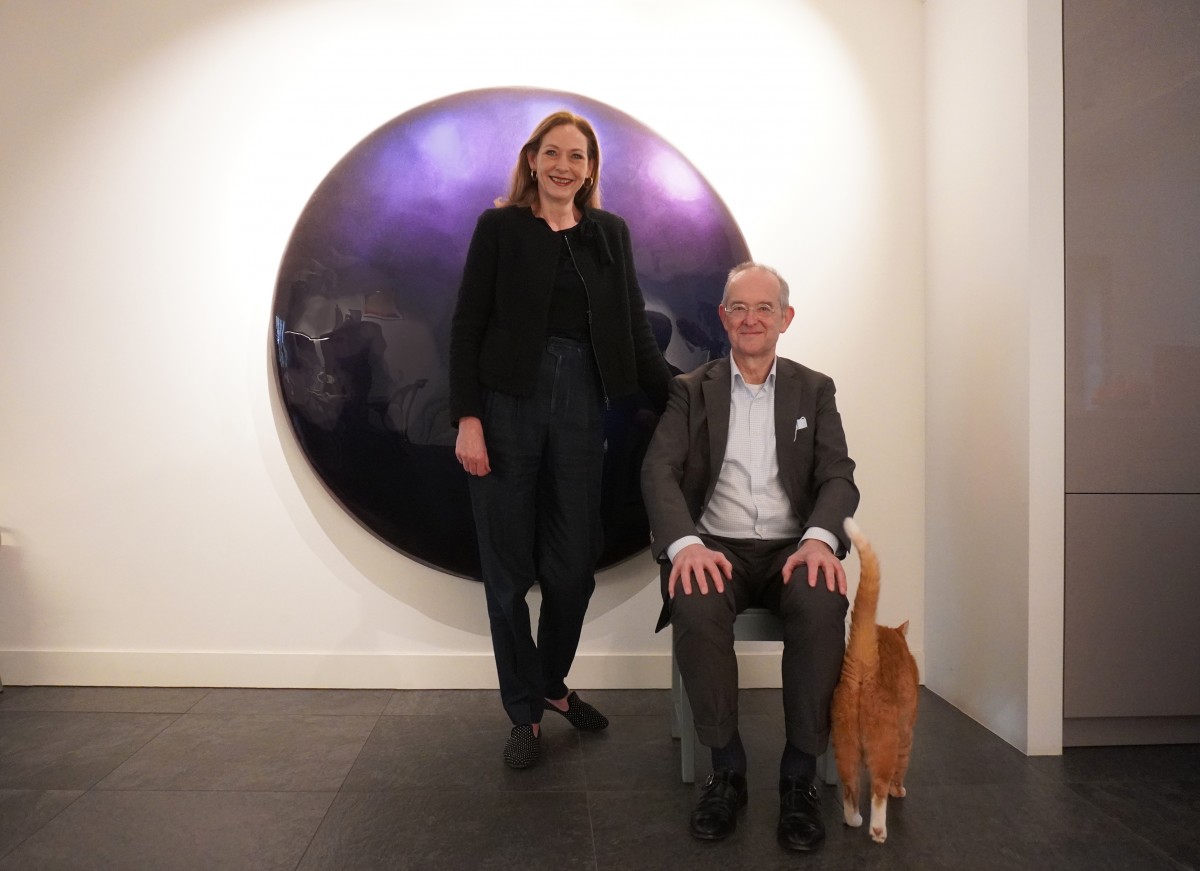Wijnanda: “I come from a family in which everyone collects everything but art. They would see something nice and then at some point, they would have two, or three of them and that's how a collection is created. That can be anything from pudding molds to Lalique vases. Owning certain things without any particular practical function is a natural idea I grew up with. That meant that the barrier towards collecting art was easy to cross.”
When I received my first salary, excessive in my view, I bought a painting.
Rob: “I have seen a lot of art from an early age. We always visited museums on vacation. That way, you quickly learn to (subconsciously) see the difference between what appeals to you and what doesn't. We have no real drive when it comes to collecting, but we also have no objection whatsoever to purchasing things that are simply beautiful and fun. And Wijnanda has no problem with the fact that the collection is becoming larger and larger. When I received my first salary, excessive in my view, I bought a painting. Then I thought: I could buy another one.”
“We became ambassadors for Young Collectors Circle because we thought it would be fun to meet a group of young collectors, to discover a new stream of information that you wouldn't come across any other way.”
The collection
“With the exception of Jan Schoonhoven, all the artists in our collection are still alive. We mainly focus on young artists. They are in the early stages of making a living from their work and it is often very necessary to support them financially. However, our condition is that the work must be beautiful and appealing. The artist must have a good story. Despite the fact that you initially buy an object, the artist's story should be honest and unique.
Despite the fact that you initially buy an object, the artist's story should be honest and unique.
When we want to buy a work, three thoughts arise: 'if only I had a bigger house', 'if only I had a bigger budget' and 'I'm going to regret not buying it'. Only after buying a piece you get to the question: what are we going to do with it now? Then we'll find a place for it. Sometimes, that goes wrong. Bob Eikelboom's work should have been hung elsewhere in our home, but it turned out to be so large that we hung it near the kitchen. Upstairs, you’ll find a statue that should have been presented outside, but it turned out to be technically impossible to get it across the house. So it is literally stranded on the way there.
Bob Eikelboom's work is currently our favourite, although those favourites tend to change a bit over time. There are only a few works that we would rather not look at anymore. Other pieces that have temporarily run out of favour are hanging out in the attic, waiting until they are liked once again. Sometimes you get tired of something that you thought was beautiful before and then you see something new in it that appeals to you on a different level. That is a nice interaction."
Tips & Tricks
“First of all, check whether the artwork is of good quality. You will get annoyed when it isn't. A work might seem so nice at first, but then it starts to curl or fall apart after the first month. In art education, little attention is paid to how you create quality, the concept is often more important. But if you spend a lot of money on it, you'll want it to last at least 5 years. This means that you have to look closely at the vulnerability of the work. Also, you shouldn't hang a work of paper in the sun, for instance.
Buy with your eyes, not your ears.
Buy with your eyes, not your ears. Listen to the artist as much as possible — and less to the gallery owner. We come across too many people who ended up buying something they didn't like, but they still wanted it because of the big name or the story behind it. Once the work is at home, that story can get lost and then there isn’t much left.
Be sure to see many different types of art. Experience art with a wide mindset! That broadens and improves the perspective of how you look at art.”
